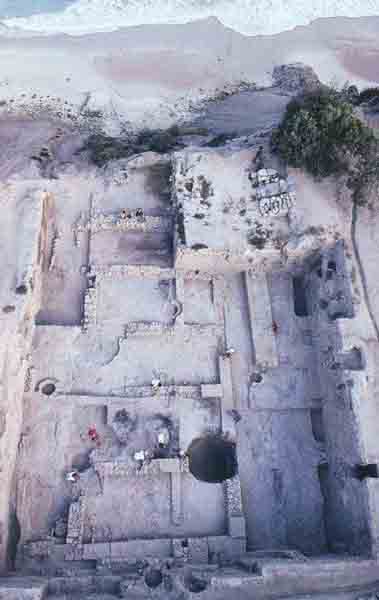Image Details

Carl Andrews
Mediterranean traders brought their goods to Ashkelon’s Persian-period port warehouse (see plan). Its six rooms, each about 12 by 27 feet, contained pottery imported from throughout the Mediterranean. The large hole at lower right in the photo is the test trench dug by British archaeologist W. Phythian-Adams in 1921; the smaller round holes are Byzantine-period wells.
Because the area where the warehouse stood dropped noticeably down to the sea, the foundation of the western half of the building lay lower than the eastern side. Sometime in the first half of the fifth century B.C., the western side was filled in to make it level with the eastern side. Before a warehouse could be rebuilt at the site, however, it was put to a puzzling new use: a vast dog cemetery (found in the area of the upper portion of the photo), somehow related to ancient religious practices.
